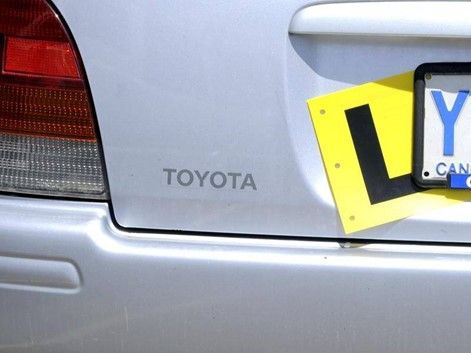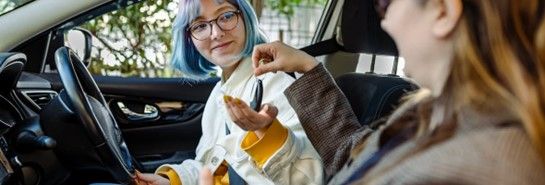
Learner and P-Plate Rules in ACT
Learner and P-Plate Rules in ACT
In the Australian Capital Territory (ACT), the journey to obtaining a driver's license involves a structured process designed to equip new drivers with the necessary skills and knowledge for safe driving. This guide provides a detailed overview of the regulations for learner and provisional drivers in the ACT.
Obtaining an ACT Learner Licence
The path to becoming a licensed driver in the ACT begins at 15 years and nine months of age. At this point, prospective drivers are expected to successfully complete a Pre-Learner Licence Training Course, a road rules knowledge test and an essential step in educating new drivers about safe driving practices and road laws. This course is typically included in the Year 10 curriculum in most ACT schools and is offered free of charge. For those unable to access the course through school, it's available through seven approved course providers in the ACT, albeit for a fee.

After completing this course and reaching the minimum age requirement, aspiring learner drivers are required to pass a computerised ACT Road Rules knowledge test and an eye test at an Access Canberra Service Centre. These tests, along with proof of identity, are prerequisites for obtaining a learner licence, which is valid for five years.
Learner Driver Licence Restrictions
While holding a learner licence, drivers must comply with several restrictions to ensure safety:
- L-Plate Display: L-plates must be clearly displayed on both the front and rear of the vehicle.
- Supervised Driving: Learner drivers must always be accompanied by a supervising driver who possesses a full Australian driver’s licence and maintains a zero blood alcohol concentration.
- Speed Limits and Alcohol Use: Learners are allowed to drive up to the posted speed limits where it is safe to do so and must have a zero blood alcohol concentration.
- Mobile Device Use: The use of mobile devices is strictly prohibited, with exceptions for listening to audio and using GPS under specific conditions.
- Towing Restrictions: Learner drivers are not allowed to tow trailers weighing over 750kg.
- Demerit Points: Accumulating four or more demerit points while on your learner licence results in a three-month suspension of this licence.
Requirements While on a Learner Licence in the ACT
To progress to a provisional licence, learner drivers have specific goals to achieve:
- Learner Logbook Hours: Those under 25 must log 100 supervised driving hours, including 10 night driving hours, over 12 months. Drivers aged 25 or older need 50 hours, including five at night, over six months.
- Hazard Perception Test: The hazard perception test is conducted online and assesses your ability to respond to potential hazards. The hazard perception test can be attempted after holding a learner’s licence for a minimum of three months.
- Additional Driving Courses: Courses like the Safer Driver Course and Vulnerable Road User Program offer ways for learner drivers to accumulate additional logbook hours.
Obtaining a Provisional Licence in the ACT
Upon meeting the age requirement of 17 years, completing the minimum required driving hours in your logbook, and passing the hazard perception test, learners can book a practical driving assessment with Access Canberra. This assessment, conducted by an ACT-accredited driving instructor, is crucial for obtaining a P1 provisional licence.

P1 Licence Restrictions in the ACT (Red P-plates)
For drivers under 25, the initial phase of the provisional licence involves displaying red P-plates for 12 months. Restrictions during this phase mirror many of those for learner drivers, including the display of appropriate plates, no alcohol in the system, and no mobile device usage while driving. Additionally, there's a limit to one peer-aged passenger between 11pm and 5am.
P2 Licence Restrictions in the ACT (Green P-plates)
Drivers over 25 move directly to a P2 licence, displaying green P-plates for three years, while those under 25 transition to P2 after one year on P1. P2 restrictions are similar to P1 but without the peer-age passenger limitation.
Demerit Points in the ACT
Learner and provisional drivers in the ACT must be mindful of demerit points, as accumulating four points can lead to licence suspension. Demerit points reset to zero when upgrading from your learner licence to your provisional licence but not when moving to a full licence.
Obtaining a Full Licence in the ACT
After fulfilling the requirements of the provisional period, which lasts three years, drivers are eligible for a full ACT licence. This transition marks the end of the restrictions faced during the learner and provisional stages.

The ACT's licensing system ensures new drivers know the ACT road rules, are thoroughly prepared, and exhibit responsible driving habits before obtaining full driving privileges. Adhering to these regulations is crucial for the learner and provisional drivers as they work towards their full driver's licence, ensuring their safety and the safety of other road users. Compliance with these guidelines is key to becoming a competent and responsible driver in the ACT.
Start Your Journey with OnlyCars.com.au
Now that you understand the requirements and restrictions for learner and provisional licences in the ACT, it's time to start your journey with OnlyCars.com.au. For more information on the various licence types, including classes, heavy vehicle and motorcycle licences, visit the Access Canberra website by clicking this link.
And if you'd like to find out more about the laws in other states, select your preference from the list below:
Learner and P-Plate Rules Tasmania
Learner and P-Plate Rules Victoria
For a great deal on financing your new purchase, contact Australia's best reviewed finance broker on 1300 Credit (1300 273 348) today or visit CreditOne.com.au